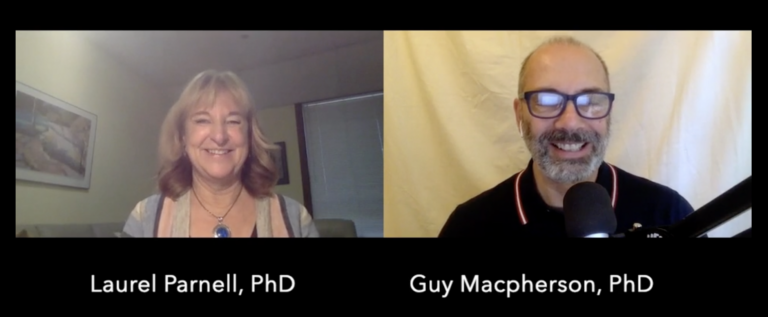Whether you’re trained in Eye Movement Desensitization and Reprocessing (EMDR) or not, as a therapist, you’re likely familiar with how powerful it can be when treating clients dealing with trauma. EMDR works well with many clients, but it has its limitations.
Limitations with therapeutic modalities can be frustrating. They stop your client from making significant progress. That is precisely what led Dr. Laurel Parnell to create Attachment-Focused EMDR (AF-EMDR): to push through the barriers holding clients back from fully healing.
So, how are they different from one another? To fully understand what sets AF-EMDR apart from EMDR, first, you must understand the “AF” in AF-EMDR, which stands for “Attachment Focused,” referring to Attachment Theory.
What is Attachment Theory?
Attachment theory centers around the idea that early bonds with primary caregivers shape lifelong development. They provide safety and security, leading you to develop healthy relationships in adulthood.
Being unable to form secure attachments in childhood often leads to problems in personal relationships and any number of mental health conditions.
About the Limitations of EMDR

EMDR is a proven effective technique in treating many types of trauma. It incorporates eye movements and bilateral stimulation (BLS) to integrate the mind-body-emotion connection and remove healing blocks so your client can feel safe and comfortable. EMDR works well for clients needing to resolve unconscious memories or traumatic events causing them distress.
EMDR allows clients to revisit challenging feelings, thoughts, and beliefs with less distress and activation.
However, EMDR doesn’t work well with clients who have developed an insecure attachment style stemming from chronic relational trauma such as childhood abuse, neglect, abandonment, or mistreatment. This is because:
- They have a difficult time navigating the intense emotions that arise during EMDR.
- EMDR requires your client to develop a strong bond with you, which is difficult when they have insecure attachments.
In essence, EMDR isn’t the ideal trauma treatment for any client. It depends on their individual situation and attachment style.
How AF-EMDR Addresses The Limitations of EMDR
Attachment-Focused EMDR effectively addresses attachment issues caused by traumatic events occurring in early childhood. Abuse and trauma from your clients’ past affect their brain development, causing gaps in neural networks and manifesting in anxiety, depression, and difficulty with emotional regulation.
The AF-EMDR process helps your client develop new neural networks, overriding the gaps to alleviate their pain, feelings of inadequacy, and loss, creating space for true healing to occur.
One of the most critical aspects of AF-EMDR is the importance of developing a strong, reparative therapeutic relationship. As mentioned above, clients with insecure attachment styles are likely to struggle with this, so prioritizing your relationship with your clients is paramount for the success of AF-EMDR.
AF-EMDR uses three essential tools to help clients heal from any number of traumas:
- Resource tapping to strengthen clients and repair developmental deficits.
Resource Tapping is a powerful tool developed by Dr. Laurel Parnell. By pairing imagery with short amounts of tapping on the legs or shoulders, clients (or yourself) can feel supported, cared for, and loved. - EMDR to process traumas.
As a therapist, you are most likely familiar with the healing power of EMDR. It’s a very valuable modality for therapists like you to use when helping clients heal from trauma. For clients with secure attachments, it can work wonders! However, the limitations of EMDR require the modification of the AF-EMDR protocol. - Talk therapy to integrate information from EMDR sessions and provide healing through client-therapist interactions.
Of course, talk therapy is a big part of AF-EMDR! Using any number of talk therapy approaches, you can help clients work through what they’ve uncovered during their EMDR and AF-EMDR sessions.

In summary, the differences between the two trauma-informed therapies include AF-EMDR’s focus on:
- the importance of the therapeutic relationship
- creating safety in the therapy, emphasizing attunement
- adapting the work to the individual client’s needs
- repairing developmental deficits, which is necessary for many clients
EMDR is a powerful therapeutic modality, but when you adapt the traditional protocol to AF-EMDR, meeting the needs of clients struggling with insecure attachments, you successfully address the limitations of EMDR
Are You Ready For AF-EMDR Training From the Parnell Institute?
Many of your clients likely struggle with insecure attachments and need your help repairing them. At The Parnell Institute, we are passionate about helping therapists like you expand your knowledge and understanding of AF-EMDR. We offer several trainings, all of which are led by some of the field’s most experienced and highly-regarded therapists.
Our proprietary AF-EMDR training sessions are highly comprehensive and lay a solid foundation for successfully implementing AF-EMDR into your practice. At the Parnell Institute, we pride ourselves on providing top-quality training in a supportive learning environment. Whether you choose in-person or virtual AF-EMDR training, you can ensure you’ll get what you need to confidently use AF-EMDR with your clients.
AF-EMDR training with the Parnell Institute includes lectures, hands-on practice, and demonstrations, where you will learn how to:

- Construct protocols and procedures for using AF-EMDR with a variety of clients.
- Demonstrate clinical application of EMDR and AF-EMDR concepts and procedural steps.
- Demonstrate client selection criteria and cautions necessary for the safe use of AF-EMDR.
- Utilize Resource development and installation in cases of challenging current life situations, blocked beliefs, or for performance enhancement.
- Identify methods for developing inner resources used for interweaves and client closure.
- Construct AF-EMDR targets using the bridging technique.
- List how to integrate AF-EMDR into clinical practice with a range of clients and presenting problems.
- Utilize Resource development and installation in cases of challenging current life situations, blocked beliefs, or for performance enhancement.
At the Parnell Institute, we ensure you feel supported. That’s why we’ll meet with you before you begin the certification process to ensure you’re ready!
Attachment-Focused EMDR is an incredibly valuable tool for trauma therapists. If you’ve been on the fence about becoming certified in AF-EMDR or just learning about it, explore our AF-EMDR training opportunities to fortify your practice and help more hurting clients find healing.

Author: Parnell Institute
The Parnell Institute for EMDR is dedicated to quality education, service and research in the treatment of trauma. We recognizes the importance of treating the whole person—body, mind, heart and spirit—within his or her cultural context.




